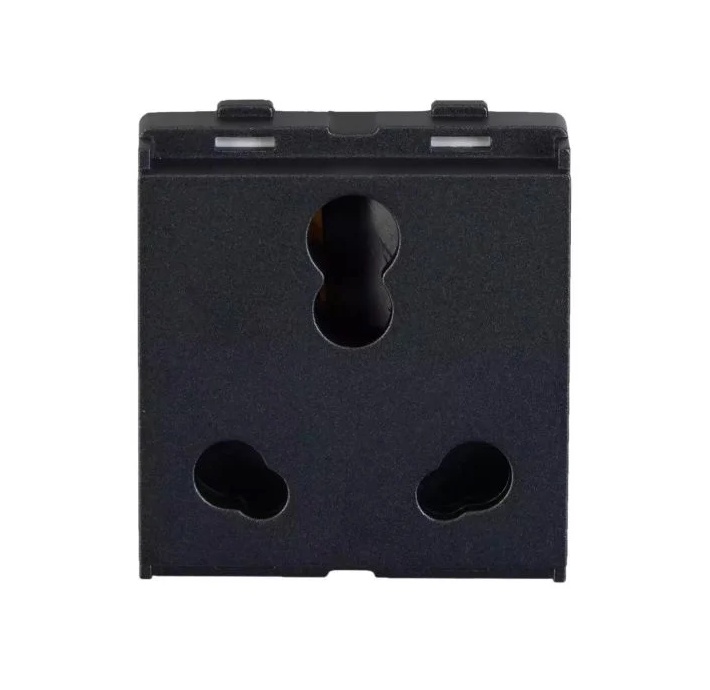In electrical engineering, electromechanical relay switches stand as stalwart guardians, facilitating the seamless transfer of electrical signals and controlling the flow of power in countless applications. From industrial automation to household appliances, these versatile devices play a pivotal role in modern technology.
In this comprehensive guide, we'll delve into the workings, applications, types, and advantages of electromechanical relay switches, uncovering the engineering marvels that underpin our interconnected world.
Understanding Electromechanical Relay Switches
At their core, electromechanical relay switches are devices that utilize electromagnetic principles to control the opening and closing of electrical circuits. They serve as electrically operated switches, capable of controlling high-power loads with the application of a low-power control signal. Unlike semiconductor-based switches, such as transistors or thyristors, electromechanical relays rely on physical movement to make or break electrical connections.
How Electromechanical Relay Switches Work?
1. Coil and Armature:
The primary components of an electromechanical relay switch include a coil of wire, an armature (movable contact), and one or more fixed contacts. When a current flows through the coil, it generates a magnetic field that attracts the armature, causing it to move and make or break contact with the fixed contacts.
2. Contact Arrangement:
Electromechanical relays come in various contact arrangements, including normally open (NO), normally closed (NC), and changeover (CO) configurations. In the normally open position, the contacts are open when the relay is not energized. Conversely, in the normally closed position, the contacts are closed by default. The changeover configuration allows for the switching between two circuits.
3. Control Signal:
To activate an electromechanical relay, a control signal is applied to the coil, typically in the form of a voltage or current. When the control signal exceeds a certain threshold, the coil energizes, generating a magnetic field that pulls the armature and closes the contacts. Conversely, when the control signal is removed or falls below the threshold, the coil de-energizes, and the contacts return to their default state.
Applications of Electromechanical Relay Switches
1. Industrial Automation:
Electromechanical relays are widely used in industrial automation systems for controlling motors, pumps, valves, and other heavy-duty equipment. They provide reliable switching capabilities for various industrial processes and machinery.
2. Power Distribution:
In power distribution systems, electromechanical relays are used for protective relay applications, such as overcurrent protection, voltage monitoring, and fault detection. They play a crucial role in ensuring the safety and stability of electrical grids and substations.
3. Automotive:
In automotive applications, electromechanical relays are employed for controlling functions such as lighting, heating, air conditioning, and engine cooling. They offer robust performance in harsh environments and are essential for vehicle safety and functionality.
4. Telecommunications:
Electromechanical relays are used in telecommunications equipment for switching and routing signals in telephone exchanges, data networks, and switching systems. They provide reliable and precise control over communication pathways.
5. Consumer Electronics:
While semiconductor-based switches are prevalent in modern consumer electronics, electromechanical relays still find use in specific applications, such as power supplies, audio amplifiers, and home appliances. They offer advantages in terms of reliability, isolation, and switching capacity.
Types of Electromechanical Relay Switches
1. General-Purpose Relays:
These relays are versatile and suitable for a wide range of applications. They come in various configurations, including plug-in, PCB mount, and socket mount versions.
2. Power Relays:
Power relays are designed to handle high-current and high-voltage loads, making them ideal for applications such as motor control, lighting control, and industrial automation.
3. Signal Relays:
Signal relays are used for low-power switching applications, such as telecommunications, instrumentation, and control systems. They offer precise control and low contact resistance.
4. Latching Relays:
Latching relays maintain their state (either open or closed) even after the control signal is removed. They are commonly used in applications where power consumption is a concern, as they only require power during the switching operation.
5. Solid-State Relays:
While not strictly electromechanical, solid-state relays (SSRs) are electronic switches that perform a similar function to electromechanical relays. Instead of physical contacts, SSRs use semiconductor devices such as thyristors or MOSFETs to switch the load.
Read Also - What Is A Thermal Overload Relay?Types And Use Cases
Advantages of Electromechanical Relay Switches
1. Reliability:
Electromechanical relays offer robust and reliable switching performance, with long operational lifetimes and minimal maintenance requirements.
2. Isolation:
Unlike semiconductor switches, electromechanical relays provide electrical isolation between the control circuit and the load circuit. This isolation helps prevent interference and protects sensitive electronic components.
3. Versatility:
With a wide range of configurations and contact arrangements available, electromechanical relays can be adapted to suit diverse application requirements.
4. Ease of Testing:
Electromechanical relays are easy to test and diagnose using standard electrical testing equipment, making troubleshooting and maintenance straightforward.
5. Cost-Effectiveness:
Despite the proliferation of semiconductor-based switches, electromechanical relays remain cost-effective solutions for many applications, particularly those requiring high-current or high-voltage switching capabilities.
Conclusion
Electromechanical relay switches are the unsung heroes of modern technology, providing reliable and versatile switching solutions for a vast array of applications. From industrial automation to consumer electronics, these devices form the backbone of our interconnected world, ensuring the seamless flow of electrical signals and the efficient operation of machinery and equipment.
With their robust construction, precise control, and enduring reliability, electromechanical relay switches continue to play a vital role in the advancement of engineering and technology. Whether controlling motors on a factory floor, routing signals in a telecommunications network, or powering appliances in our homes, these engineering marvels remain indispensable components of our interconnected world.


No comments yet